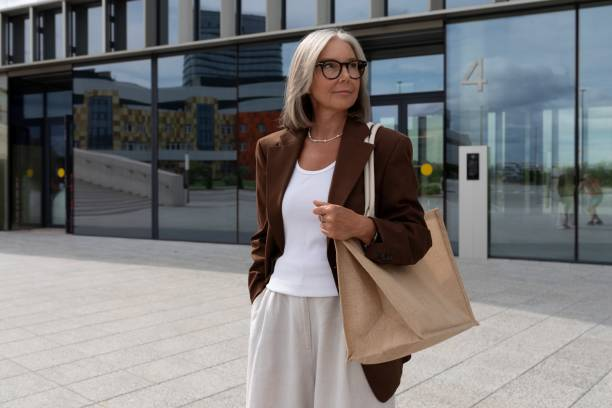The Psychology of Fashion: Decoding What Your Clothes Reveal About You
Have you ever wondered what your clothing choices reveal about your personality? The psychology of fashion delves into this topic, exploring how our attire reflects our inner selves, emotional states, and social identities. Beyond mere aesthetics, the clothes we wear can speak volumes about who we are, often conveying messages even before we utter a word.
The Connection Between Clothing and Self-Expression

Fashion acts as a form of self-expression, allowing individuals to project their self-image and mood. When people select outfits, they’re often consciously or subconsciously broadcasting their identity. For example, bold patterns can signify a vibrant personality, while more neutral tones might indicate a preference for subtlety and classic aesthetics. Clothing can also serve as a canvas for one’s beliefs and values, evident through slogans, color choices, and even the brands people support.
Additionally, fashion preferences can reveal a person’s cultural background or affiliation with particular subcultures. Someone wearing traditional attire might be proudly showcasing their heritage, whereas a punk outfit could signal a rebellion against societal norms. The choices we make in our wardrobe are thus deeply tied to how we perceive ourselves and want others to perceive us.
The Psychological Impact of Colors in Fashion
Colors play a pivotal role in psychology and fashion, influencing not just how we feel but also how others perceive us. Bright colors like yellow and orange are often associated with happiness and enthusiasm, while darker shades like black and navy might convey sophistication or seriousness. Color psychology can further enhance personal branding; for instance, a person seeking to be seen as trustworthy might opt for blue, a color known to evoke a sense of reliability.
It’s important to note that cultural differences can impact color symbolism. In some cultures, red might symbolize joy and celebration, while in others, it could signify danger or warning. Therefore, understanding the psychological impact of colors can help individuals make more informed choices in their wardrobes, aligning their attire with desired emotional and social outcomes.
Fashion and Emotional Well-being
The clothes we wear can have a profound impact on our emotional well-being. Studies have shown that dressing in a way that makes you feel confident can actually boost your self-esteem and overall mood. This phenomenon, often referred to as “”enclothed cognition,”” suggests that the symbolic meaning of clothing items can affect the wearer’s attitude and mental state.
For example, dressing in professional attire can make one feel more competent and authoritative, which can be beneficial in career settings. Conversely, casual and comfortable clothing can promote relaxation and happiness, making it ideal for downtime. Therefore, being mindful of our clothing choices can serve as a simple yet effective tool for enhancing our emotional well-being.
The Role of Fashion in Social Status and Group Identity
Fashion is not just an individualistic endeavor; it also plays a crucial role in social dynamics. The clothes we wear can signify our social status, professional roles, and even group affiliations. High-end brands and luxury items, for example, often signal wealth and high social status, while uniforms can indicate membership in specific organizations or professions.
Group identity is another aspect where fashion exerts its influence. Wearing team colors at a sports event or donning similar styles as your friends are subtle ways to express belonging and solidarity. Fashion thus serves both as a personal emblem and a social tool, helping us navigate and communicate within various social landscapes.
Conclusion
In summary, the psychology of fashion reveals that our clothing choices offer profound insights into our personalities, emotions, and social identities. From self-expression and emotional well-being to social status and group affiliation, what we wear carries significant psychological weight. Being aware of these factors can empower us to make more conscious decisions in our daily fashion choices, enhancing not only our self-perception but also our interactions with the world around us.
FAQ
1. How does fashion influence self-esteem?
Fashion can significantly influence self-esteem by affecting how individuals perceive themselves and how they are perceived by others. Wearing clothes that make one feel confident and comfortable can boost self-esteem and positively impact one’s mood.
2. What is enclothed cognition?
Enclothed cognition is a psychological phenomenon where the clothing a person wears affects their cognitive processes. The symbolic meaning of clothing items can influence the wearer’s attitudes, emotions, and behavior.
3. Can colors in clothing affect my mood?
Yes, colors in clothing can affect your mood. Bright colors like yellow and red can evoke feelings of happiness and energy, while darker shades like black and grey may induce a more serious or somber mood.
Fashion can indicate social status through the use of luxury brands, designer labels, and high-end fashion items. These elements often signify wealth and higher social standing, making fashion a tool for social signaling.
5. What role does fashion play in group identity?
Fashion plays a crucial role in group identity by allowing individuals to visually express their affiliation with specific groups, cultures, or organizations. Team uniforms, cultural attire, and subcultural styles are all examples of how fashion fosters a sense of belonging.

